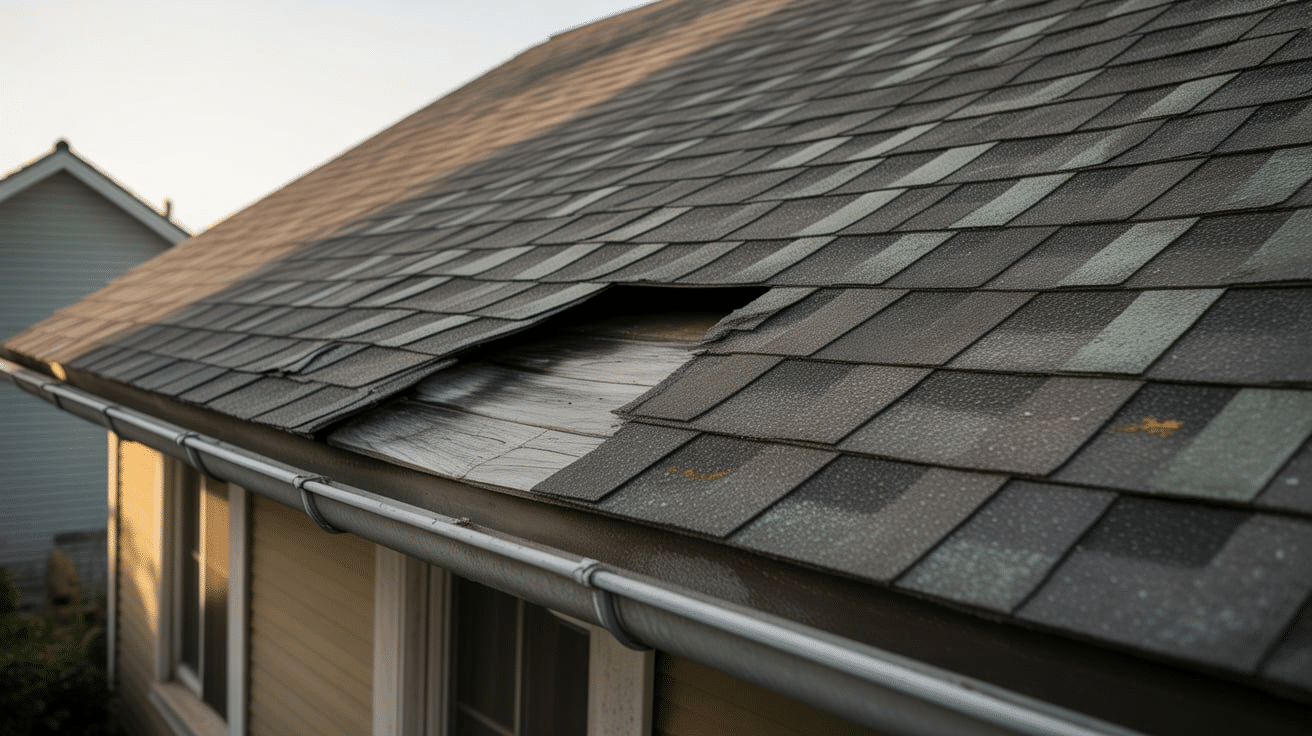Looking up at your home and noticing a dip in your roofline can make your heart sink faster than that sagging section.
Many homeowners face this common problem. That curved shape where there should be a straight line isn’t just about looks; it could signal bigger issues hiding underneath.
A sagging roof often comes from water damage, old age, or poor design. Left alone, small sags can turn into major headaches and costly repairs.
The good news is that most roof sags can be fixed before they cause serious damage. This guide explains what causes a sagging roof, why it matters, and the steps to get your home back in shape, without breaking the bank.
What Does a Sagging Roof Mean?
A sagging roof is when part of your roof looks like it’s dipping or sinking instead of staying straight and firm. Normally, a roof should have a smooth, even slope that keeps water and snow moving off safely.
When a roof sags, you might see low spots or dips along the edges or in the middle. Sometimes, the ceiling inside your home may also look uneven or cracked, which can be a sign that the roof above is sagging.
Why Roofs Sag (Basic Structural Failure Explained)
Roofs sag mainly because their supporting parts start to weaken or fail. This can happen due to:
- Wood rot or damage: Moisture can cause wood beams or trusses to decay, weakening them.
- Too much weight: Heavy snow, ice, or added roofing layers can overload the structure.
- Poor construction: Incorrect design or low-quality materials don’t hold up well over time.
- Foundation or wall issues: If the building shifts or the walls settle, the roof can dip.
Common Causes of a Sagging Roof
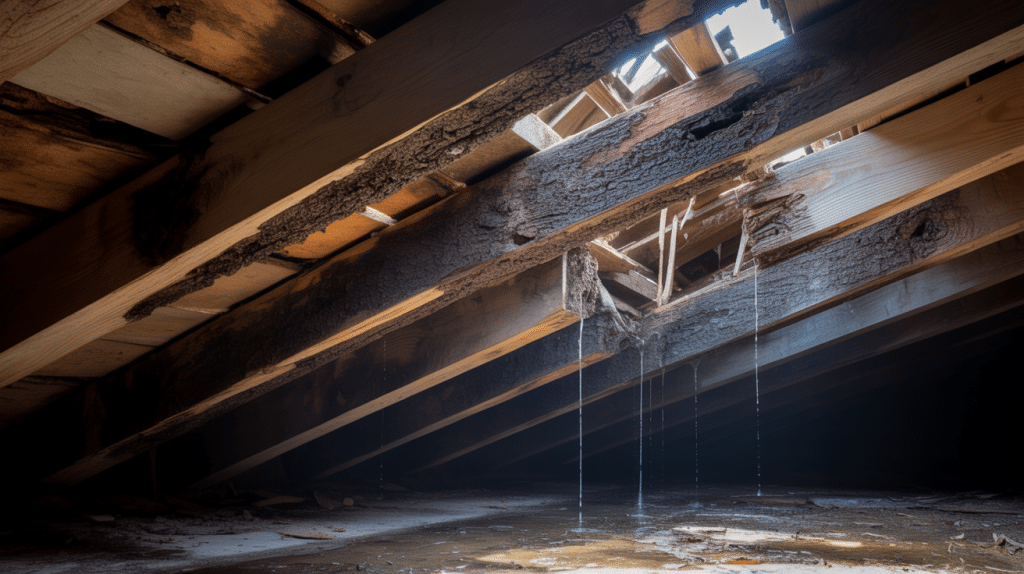
A sagging roof doesn’t happen overnight. It usually results from a mix of different problems. Here are the main causes broken down to help you understand why your roof might be sagging:
-
Age and Wear of Roofing Materials
Roofing materials wear out over time. Shingles and wood weaken, reducing the roof’s sturdiness. Older roofs are more likely to sag as support structures lose strength. -
Water Damage and Leaks Causing Wood Rot
Water from leaks or poor drainage can soak into the wood beams and trusses. This moisture leads to wood rot, which weakens the roof’s frame and causes it to sag. -
Excessive Weight from Snow, Debris, or New Roof Layers
Heavy snow, ice, or piles of debris increase roof weight. Adding roofing layers without removal can overload the structure, causing sagging. -
Poor Original Construction or Design Flaws
If a roof wasn’t built right, sagging is more likely. Mistakes like undersized beams, weak joints, or wrong materials can cause structural failure over time. -
Foundation or Framing Issues Affecting Roof Support
Problems with the building’s foundation or walls can cause it to shift or settle unevenly. This movement puts stress on the roof supports, making parts of the roof sag or dip.
Risks and Dangers of Ignoring a Sagging Roof
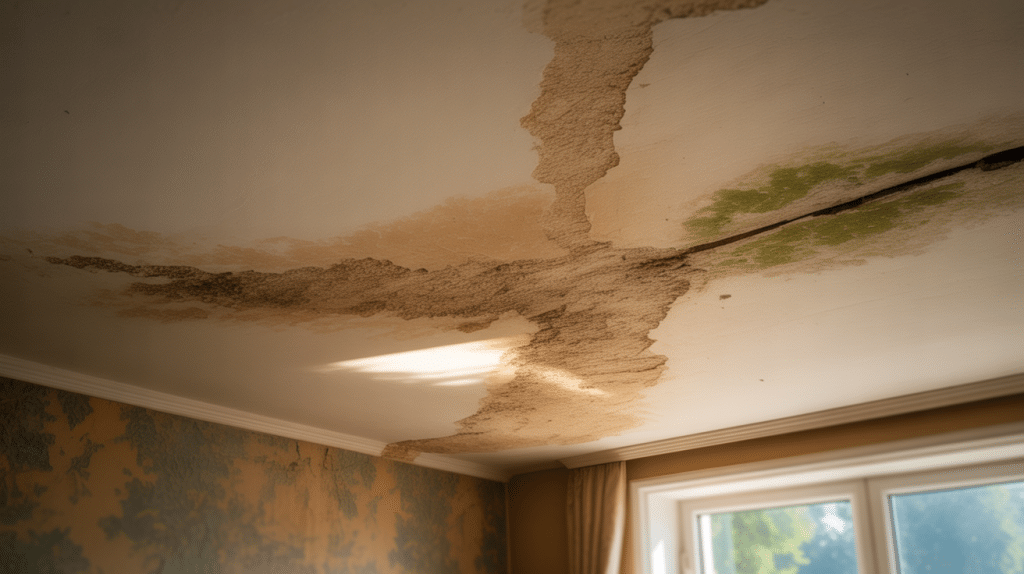
Ignoring a sagging roof can lead to serious problems that affect your home, safety, and wallet. Understanding these risks is important so you know why quick action matters.
-
Structural Collapse Risk
A sagging roof shows that parts of your home’s structure are weakening. If left unattended, this can lead to a partial or full roof collapse, putting everyone inside in danger. -
Water Leaks Leading to Mold and Interior Damage
Sagging areas often allow water to seep in, causing leaks that damage ceilings, walls, and insulation. Over time, moisture creates mold, which is harmful to your family’s health. -
Increased Energy Costs Due to Poor Insulation
A sagging roof can compress or damage insulation, reducing its effectiveness and causing heat loss in winter and cooling loss in summer, raising energy bills. -
Decreased Home Value and Costly Repairs if Delayed
A sagging roof lowers your home’s value. The longer you wait to fix it, the more expensive repairs increases costs, potentially needing a full roof replacement instead of simple fixes
Understanding Acceptable Roof Sagging Levels
An acceptable level of sagging in roofs refers to slight, natural deflection that may occur due to age, weather conditions, or load distribution.
Roofing specialists generally agree that minor sagging, especially in older roofs, is not always a cause for alarm if it is minimal and does not affect the structural integrity.
However, any noticeable or severe sagging, particularly around the center or in large sections, could signal underlying issues such as weakened rafters, water damage, or poor installation.
It’s crucial to monitor sagging regularly and consult a roofing professional if it worsens. Timely repairs or reinforcement can prevent further damage and extend the roof’s lifespan, ensuring the home’s safety and stability.
How to Inspect Your Roof for Sagging
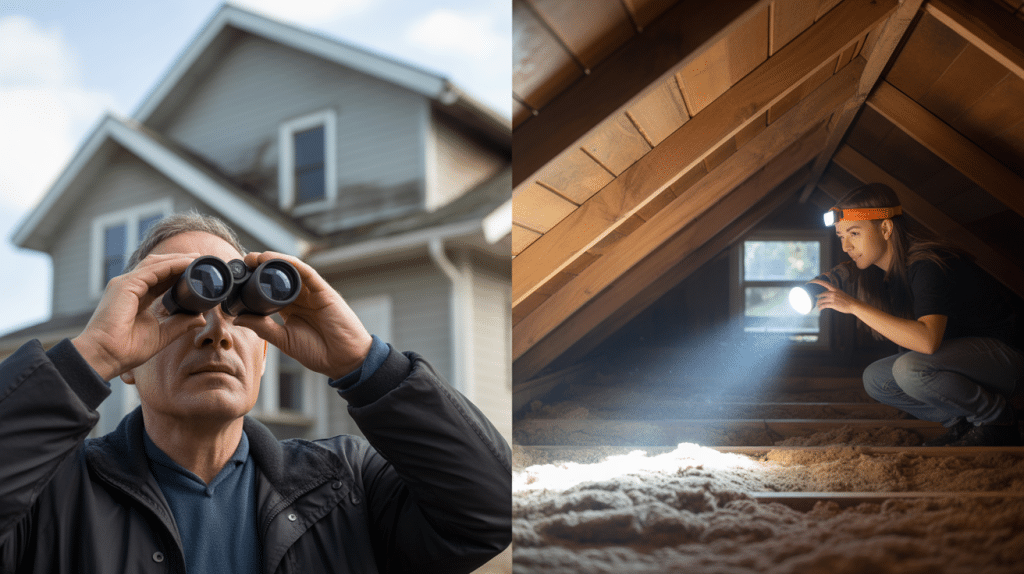
Checking your roof for sagging early can save you time and money. Here’s a simple, safe way to inspect your roof yourself before getting professional help.
-
Outside:
Walk around your home and examine the roofline. Look for dips, uneven spots, or sections that look lower than the rest. If necessary, use binoculars to get a closer view without climbing. -
Inside:
Go into your attic or upstairs rooms and look for signs like cracks or bulges in the ceiling, warped beams, or any unusual gaps along the roof framing.
When to Stop and Call an Expert
If you notice large dips, cracks in beams, or water damage, or if you’re unsure about any signs, it’s best to call a roofing professional. They have the tools and experience to assess the problem safely and accurately.
How to Fix a Sagging Roof: DIY and Professional Options
A sagging roof can be a serious issue, but depending on the cause and severity, there are different ways to fix it. Some repairs can be handled by confident homeowners with basic tools, while others require the expertise of a professional roofer or contractor.
1. Temporary Support Methods
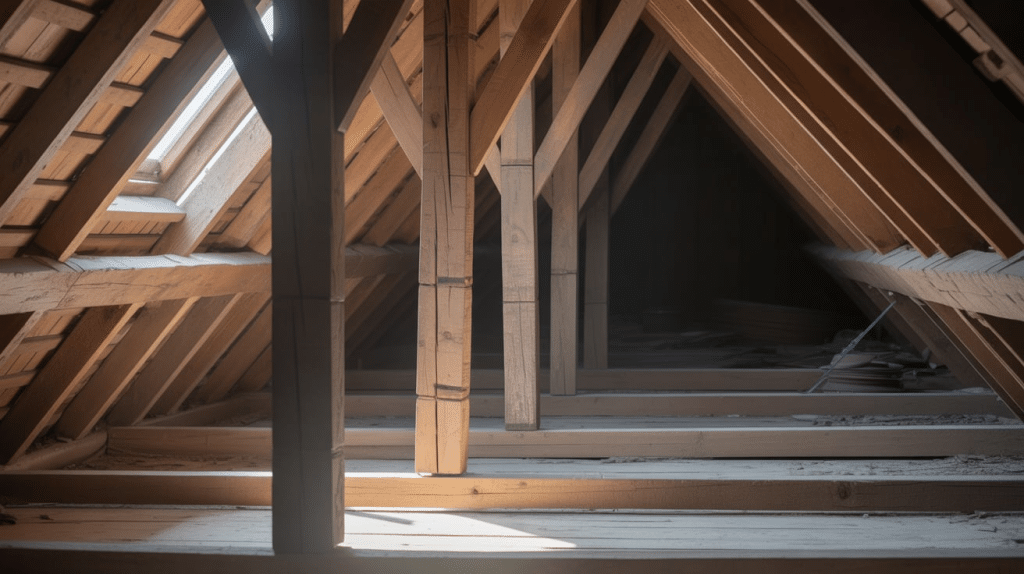
If you notice sagging signs, adding temporary braces in the attic can support the roof and prevent damage. This DIY method involves vertical supports between rafters and floor joists to relieve pressure. However, it is a short-term fix and should be followed by proper repairs.
2. Repairing Damaged Rafters or Trusses
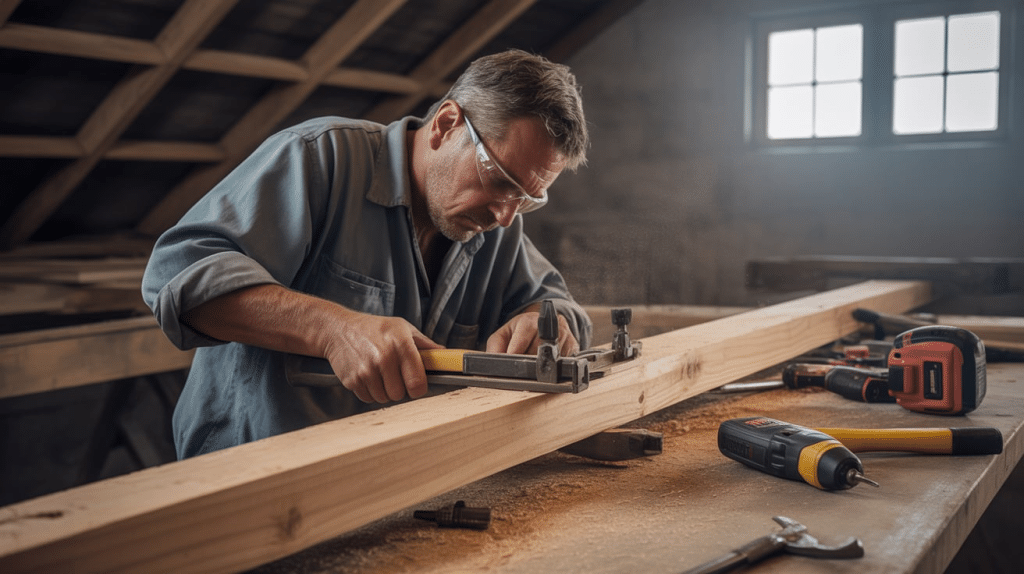
Sagging occurs when rafters or trusses weaken or crack. Repairing them may involve sistering (attaching new wood) or replacing the damaged sections. This requires carpentry skills and safety precautions.
3. Replacing Rotten Wood or Damaged Shingles
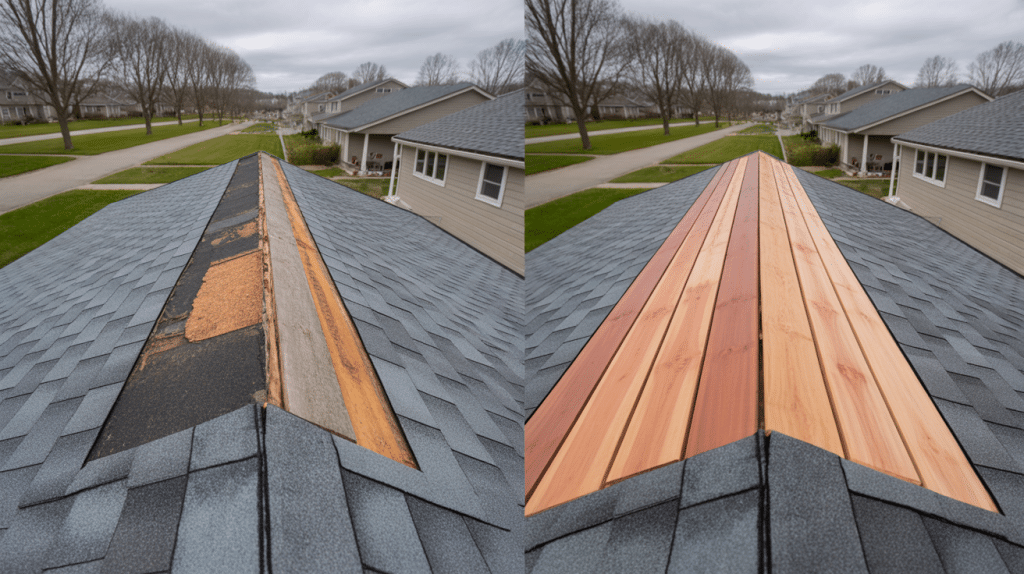
Water-damaged wood or decayed shingles can cause sagging. Replacing these parts restores strength and prevents leaks. Homeowners with moderate experience can replace shingles, but rotten structural wood usually needs professional help.
4. Considering a Full Roof Replacement
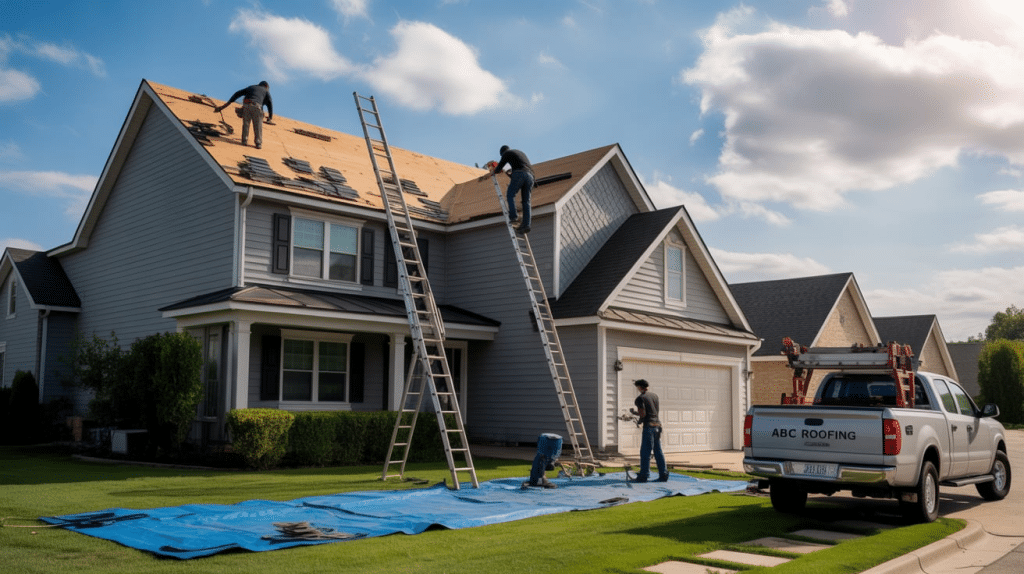
If the sagging is widespread or the roof is very old, a full replacement might be the safest and most cost-effective option. This is a major project best left to professionals, as it involves removing the old roofing and installing new materials.
Preventing Roof Sagging: Maintenance Tips
Preventing a sagging roof is much easier than fixing one. With regular care and attention, you can maintain a strong and safe roof for years. Here are some practical tips to help you avoid future problems:
-
Regular Roof and Attic Inspections
Check your roof and attic for signs of damage, leaks, or structural issues at least twice a year. Early detection helps catch small problems before they cause significant issues, such as sagging. -
Keeping Gutters Clean and Preventing Water Buildup
Clogged gutters cause water to pool around the edges of your roof, increasing the risk of wood rot and sagging. Clean gutters regularly to ensure proper drainage. -
Removing Heavy Debris or Snow Promptly
Branches, leaves, and snow can add extra weight to your roof, putting stress on the structure. Remove debris and shovel snow safely to reduce the load. -
Proper Ventilation and Insulation
Good attic ventilation and insulation help prevent moisture buildup and temperature extremes that can weaken roofing materials and cause sagging over time.
A Solid Finish to Your Roof Troubles
Your roof shouldn’t sag, it’s that simple. When it does, it indicates that something is wrong.
Have a droopy ceiling? Please don’t panic, but don’t ignore it either. With the right fixes, from simple beam reinforcements to full replacements, your home can stand tall again.
Remember: catching roof problems early saves money and headaches later. That small dip might seem harmless now, but left alone, it could mean big trouble down the road.
Need help with your sagging situation? Local pros are just a call away, ready to restore your roof to its original shape.
Leave a comment below with your roof questions, or check out our other repair guides. Your home deserves a strong roof over its head, and you deserve peace of mind.

